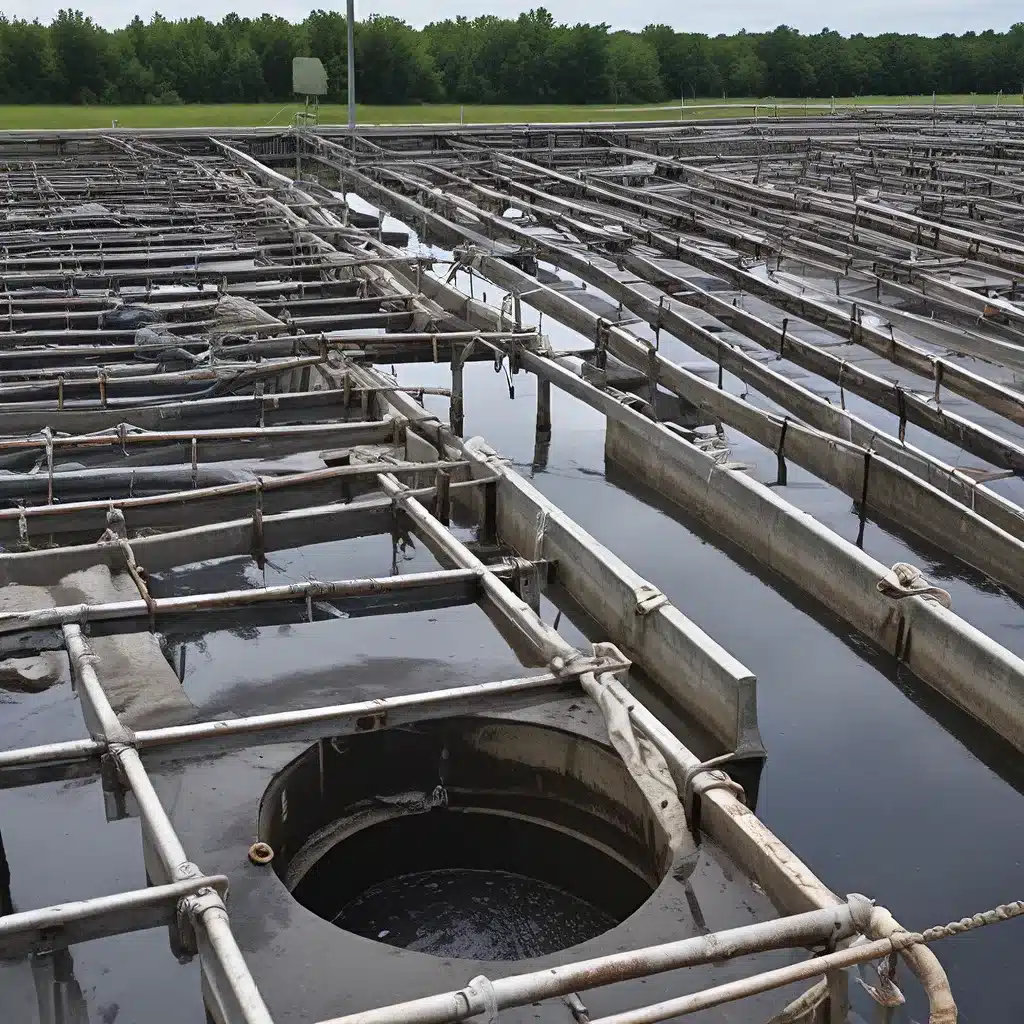
Navigating the Complexities of Wastewater Treatment: Safety Protocols and Procedures
Have you ever wondered what it takes to manage the intricate systems that keep our communities’ water clean and safe? As someone who has worked in the water treatment industry for over a decade, I can tell you that it’s no easy feat. Wastewater treatment facilities are like the unsung heroes of our infrastructure, quietly tackling the dirty work to ensure our water supply remains pure and potable.
But with great responsibility comes great complexity. These facilities face a myriad of safety challenges, from the presence of toxic gases to the risk of disrupting delicate treatment processes. It’s a high-stakes balancing act that requires vigilance, expertise, and a deep understanding of the safety protocols and procedures that keep these essential operations running smoothly.
Navigating the Hazardous Landscape
One of the most pressing safety concerns in wastewater treatment is the presence of toxic gases. As GasD points out, facilities encounter significant challenges due to the buildup of gases like hydrogen sulfide, methane, and chlorine. These substances can pose severe health risks to staff and disrupt the treatment process if not properly monitored and controlled.
Hydrogen sulfide, for example, is a byproduct of the decomposition of organic matter and is highly toxic, causing respiratory issues and even fatalities in high concentrations. Methane, a byproduct of anaerobic digestion, is flammable and can create explosive hazards. And chlorine, used for disinfection, can lead to severe respiratory problems and skin irritation if not handled with the utmost care.
Navigating this hazardous landscape requires a multi-pronged approach. Continuous gas monitoring, robust ventilation systems, and comprehensive safety protocols are all critical components of a well-designed wastewater treatment facility. Investing in state-of-the-art gas detection technology, like the GasD 8000 Portable Gas Monitor, can help facility managers stay one step ahead of potential gas-related incidents.
Embracing a Culture of Safety
But it’s not just about the equipment – it’s also about the people. Wastewater treatment facilities need to foster a culture of safety, where every employee understands the importance of adhering to strict protocols and procedures. This starts with comprehensive training programs that cover everything from proper personal protective equipment (PPE) usage to emergency response protocols.
At Inland Waters Inc., we take this responsibility very seriously. Our team undergoes rigorous safety training, with regular refresher courses and simulations to ensure they’re always prepared for the unexpected. We also prioritize open communication and encourage our staff to report any safety concerns, no matter how minor they may seem.
After all, in the high-stakes world of wastewater treatment, there’s no room for complacency. A single misstep or lapse in judgment can have catastrophic consequences, not just for the facility itself, but for the entire community it serves. That’s why we’re constantly evaluating and refining our safety protocols, staying ahead of the curve and adapting to the ever-evolving challenges of this dynamic industry.
Navigating the Complexities of PFAS
Of course, the safety challenges in wastewater treatment go beyond just the immediate hazards of toxic gases. In recent years, the emergence of per- and polyfluoroalkyl substances (PFAS) has added a new layer of complexity to the equation.
As GHD points out, these ubiquitous and persistent chemicals have become a significant environmental concern due to their toxicity. The US Environmental Protection Agency (EPA) has stepped in, promulgating new regulations to limit the presence of PFAS in drinking water.
For wastewater treatment facilities, this means navigating a whole new set of challenges. Ensuring compliance with the EPA’s PFAS National Primary Drinking Water Regulations Rule requires a deep understanding of the various PFAS capture and destruction technologies available. It’s a complex landscape, with factors like water quality, the presence of co-contaminants, and pH all playing a critical role in the effectiveness of PFAS management.
At Inland Waters, we’ve been working closely with our partners at GHD to stay ahead of the curve on PFAS. We’ve been conducting in-depth analyses, assessing treatment options, and developing comprehensive PFAS minimization plans to ensure our facilities are ready to meet the new regulatory requirements. It’s a constantly evolving process, but one that we’re committed to mastering for the sake of our community’s water supply.
Embracing Collaboration and Innovation
Ultimately, the success of any wastewater treatment facility hinges on its ability to navigate the complexities of safety, regulatory compliance, and emerging challenges like PFAS. It’s a never-ending balancing act, requiring a combination of technical expertise, forward-thinking strategies, and a deep commitment to protecting the health and well-being of both staff and the community.
At Inland Waters, we’re proud to be at the forefront of this effort. We’re embracing collaboration with industry leaders like GasD and GHD, leveraging their insights and innovative solutions to stay ahead of the curve. And we’re constantly investing in our people, empowering them to think creatively, challenge the status quo, and find new ways to enhance the safety and efficiency of our operations.
Because when it comes to wastewater treatment, the stakes are simply too high to settle for anything less than excellence. It’s a calling that requires a unique blend of technical mastery, strategic vision, and a relentless pursuit of safety. And it’s a challenge that we at Inland Waters are proud to take on, day in and day out, for the sake of our community and the environment we all share.


